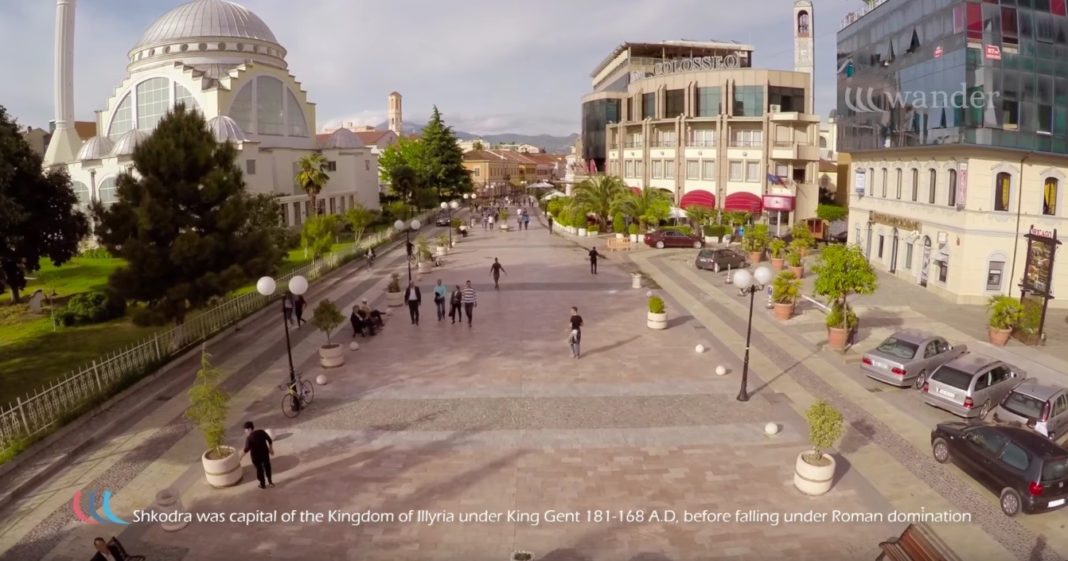

Video: https://wander.al/
Shkodra, it is one of the oldest cities in the country, founded in the 4th century B.C. as the center of the Labeat tribe of Illyrians known with the name Scodra . Shkodra has been occupied several times throughout history: First by the Romans (168 B.C.), then the Serbians (1040), the Venetians (1396), and finally by the Ottomans (1479). The city returned to Albanian control as the feudal principality of the Balshaj during the 14th century and served as the municipal center of the Bushatllinj Pashallëk from 1757 to 1831. Shkodra is very rich in cultural heritage , the city itself as well as the people bear pride in the large number of artists, musicians, painters, photographers, poets, and writers born here. Shkodra’s main tourist attraction is Rozafa Castle. Rising majestically upon a rocky hill west of the city, the outcroppings and battlements paint a blazing picture against the setting sun. It is surrounded by the waters of three rivers; the Drini, Buna, and Kiri. Much like the town it protected, the castle has Illyrian origins. According to the historian Tit Livi, “it was the strongest area of the Labeats.” Like all ancient works, the castle comes with a popular local legend. Rozafa was the name of the bride of the youngest of three brothers who originally built the castle. The three men worked tirelessly by day laying mortar and stone but the walls always crumbled overnight. Consulting a wise man, they learned that to expel the evil attacking at their daily work and protect their friends and family with a strong castle that would last through the ages, one of their wives needed to be entombed within the walls. The brothers made a heart-wrenching pact not to alert their wives to this danger, and whoever brought her husband his noon meal the following day would be sacrificed. The elder brothers broke their word however, and it was Rozafa alone who came with food. When she heard the proclamation, she wept for her newborn son and husband, but allowed herself to become a living part of the walls so that the castle could be built. According to both legend and local folklore, the calcareous water flowing at the entrance of the castle is the milk flowing from one of her breasts, which she requested be left exposed so that she could feed her baby. She also pleaded for one foot and one arm to be left free, in order to rock her son’s cradle at night and sooth him during the day. Historians tell us a less enchanting and more scientific background of the castle’s characteristics. It reflects the dominion of the Balshaj family but passed through enough other ruling periods that each left their own signs and markings on the grounds, including a distinct Venetian flare, some Ottoman architecture from the 16th and 17th centuries, and even a few modifications from the Bushatllinj family during the 18th and 19th centuries. Within the castle walls is a museum where a discerning lover of antiquities could spend a comfortable afternoon reading more about its history, and a restaurant has been added to showcase local food and traditional dress. Shkodra is one of the most important cities of Albania and is also known to be the center of Albanian Catholicism .





